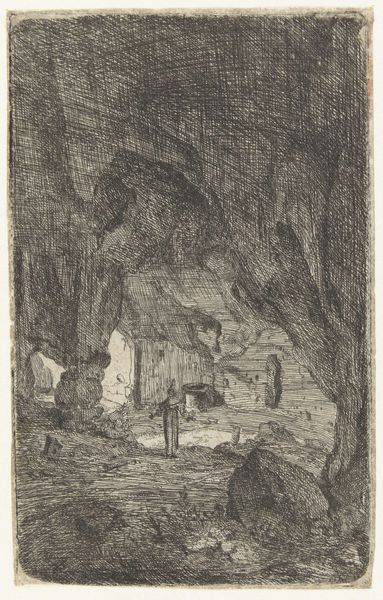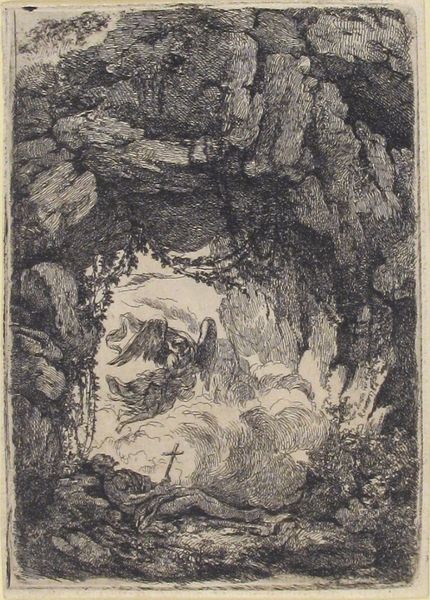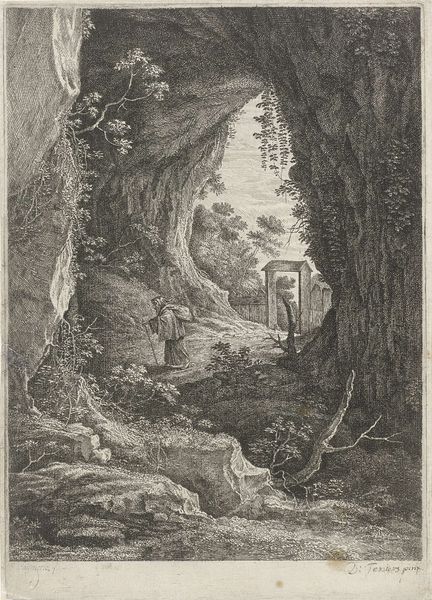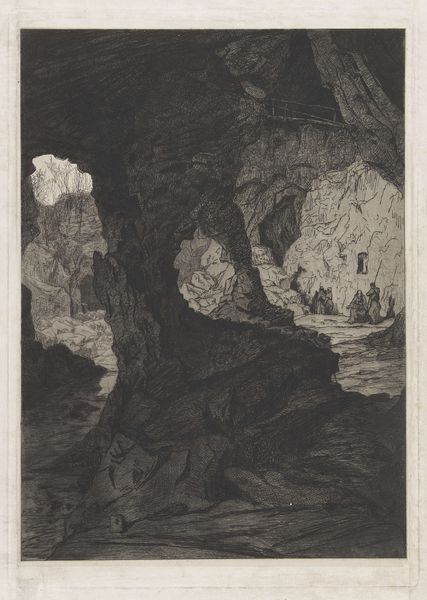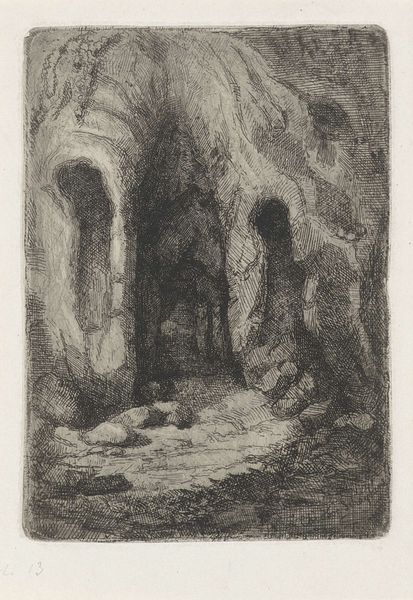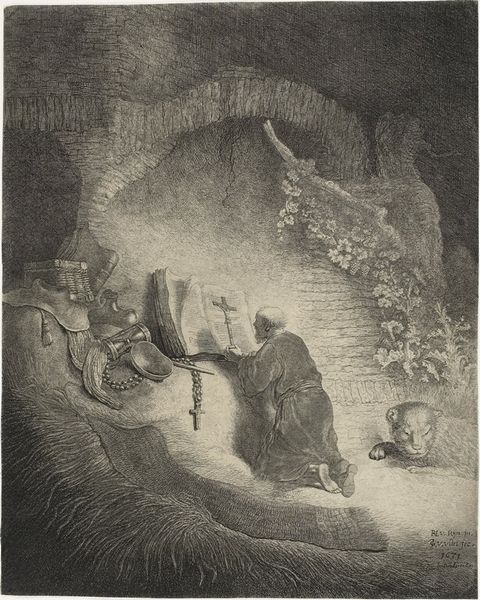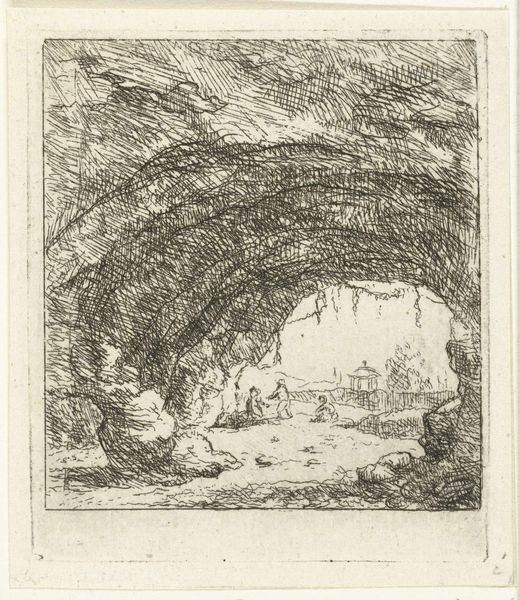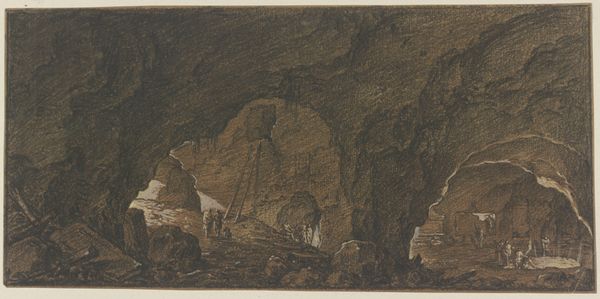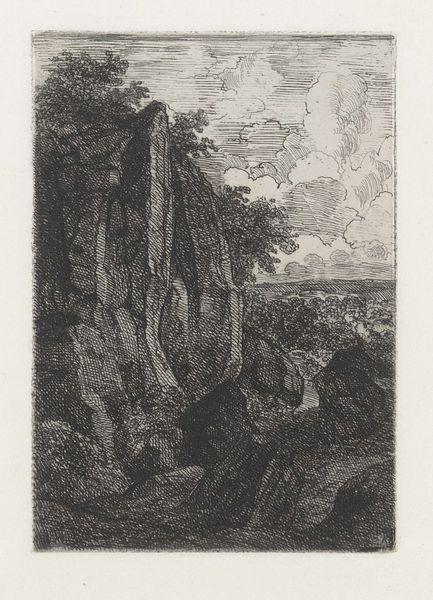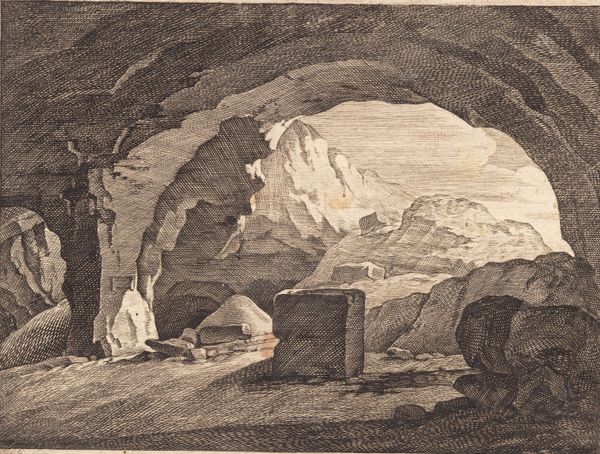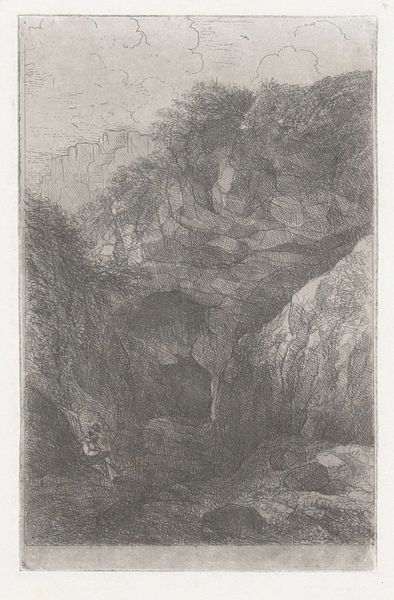
Grotto and Friars, from The Ruins of Rome 1639 - 1640
0:00
0:00
drawing, print, etching, paper
#
drawing
#
baroque
#
dutch-golden-age
# print
#
etching
#
landscape
#
etching
#
figuration
#
paper
#
line
Dimensions: 100 × 61 mm (plate); 102 × 63 mm (sheet)
Copyright: Public Domain
Editor: Here we have "Grotto and Friars, from The Ruins of Rome" created around 1639-1640 by Bartholomeus Breenbergh. It’s an etching, quite detailed, and gives off this almost haunting vibe. What’s your interpretation of this scene? Curator: That haunting feeling you pick up on resonates deeply. Think about what Rome represented at this time – the heart of a fallen empire, a site of religious power undergoing immense changes. Breenbergh isn't just depicting a pretty ruin; he's showing us the weight of history, right? Who are these friars, dwarfed by the architecture? What are they seeking among the fragments of a lost world? Are they figures of contemplation, or symbols of a faith struggling within a changed landscape? Editor: It makes you wonder if they are questioning the old order. The ruin could almost represent a past ideology that’s crumbling. Curator: Exactly. Consider how the etching technique itself – the deliberate lines and contrasts – mirrors the process of excavating meaning from the past. Breenbergh highlights absence through presence; what *isn’t* there becomes as significant as what remains. Does the composition itself— the way the figures are positioned within this decaying structure— contribute to this narrative of change and reflection? Editor: Definitely. They look so small and insignificant next to everything else. It’s almost like the figures highlight the transience of humanity compared to the enduring structures they’re in. Curator: And the power structures they represent. How might interpretations of this work shift depending on a viewer’s own relationship to institutional authority, their own negotiation of history and belief? Editor: I see that the personal connections would greatly impact what someone takes away from it. It's a stark look at the echoes of history. I’ll definitely remember this print now as something more than just a picture of some ruins. Curator: Precisely, viewing this through various lenses opens us up to more critical interpretations about history.
Comments
No comments
Be the first to comment and join the conversation on the ultimate creative platform.
